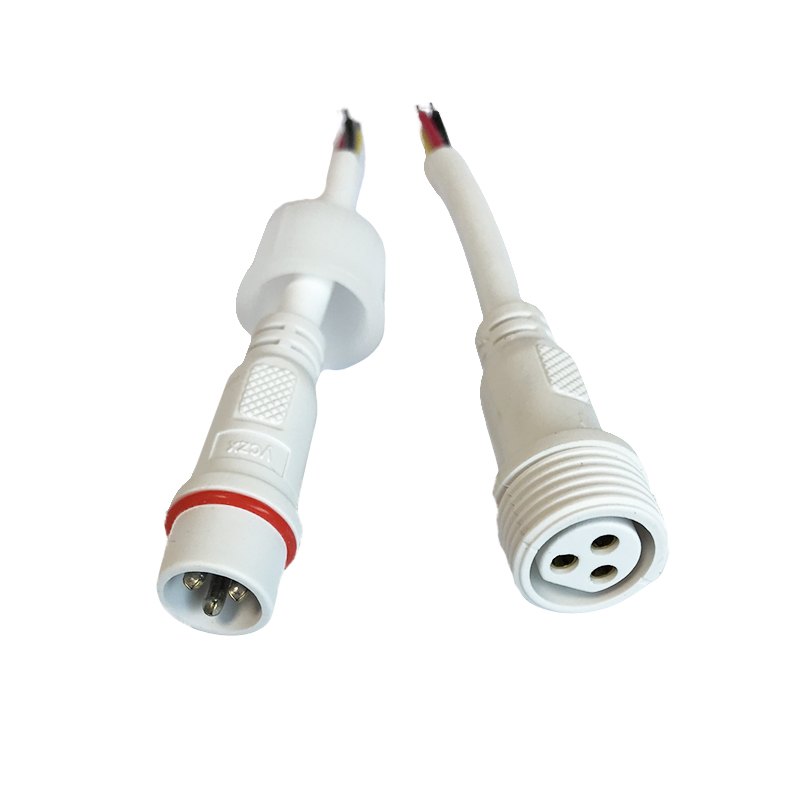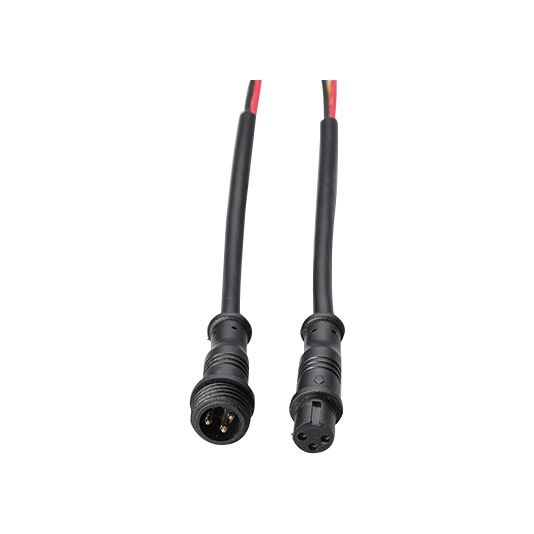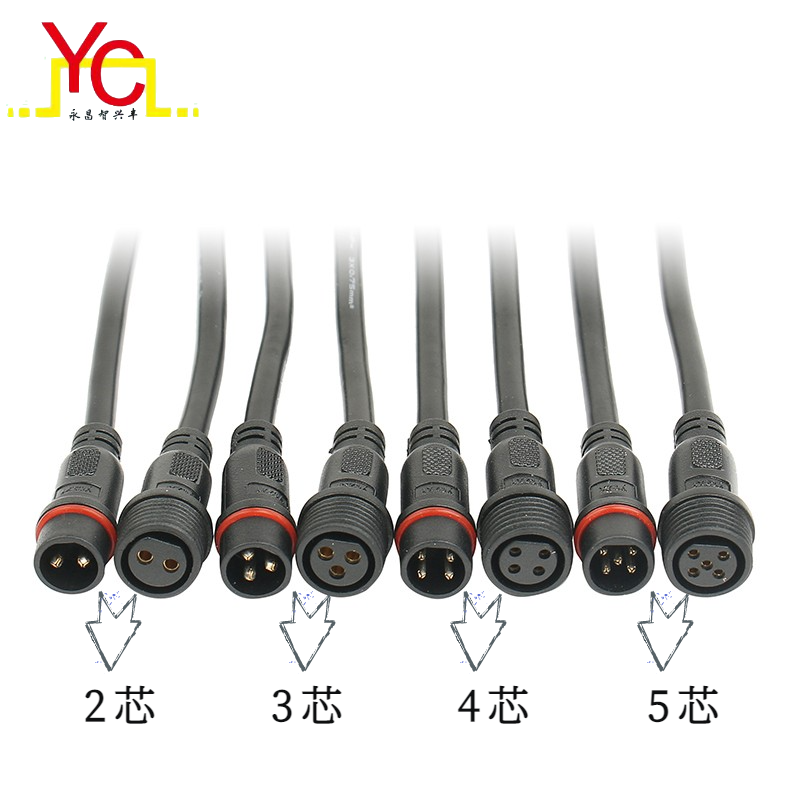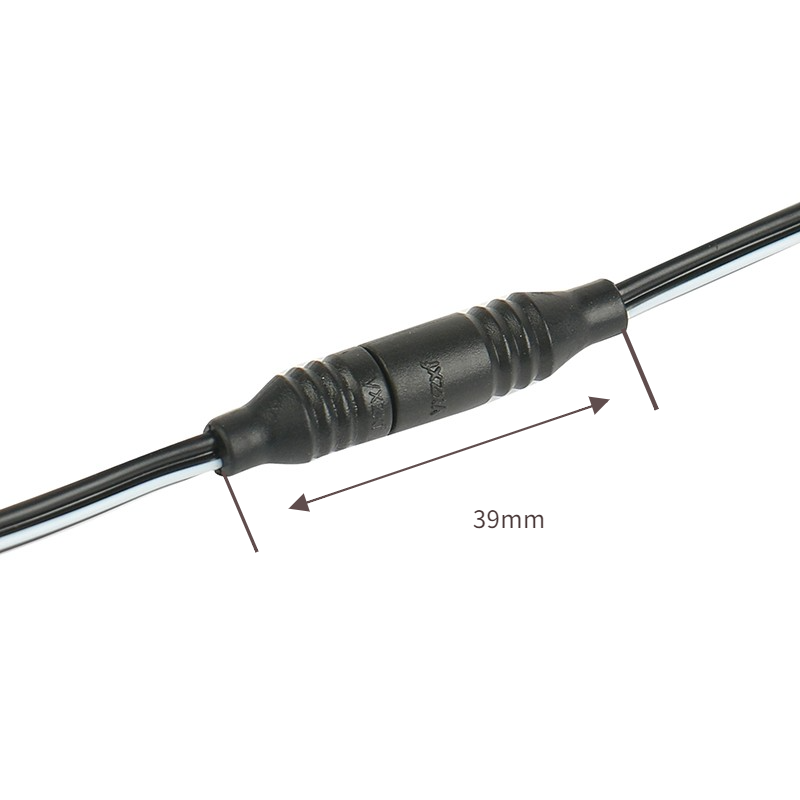News


News

In-depth analysis of connector waterproofing solutions in outdoor electronic devices
Release time:2024-11-19
viewed:453
In the era of rapid development of modern technology, outdoor electronic devices such as LED lighting, security cameras, electric vehicles, etc., have become an important part of our daily lives. These devices are usually exposed to a variety of harsh environmental conditions, such as high temperature, low temperature, salt spray, etc., so the waterproof performance of the connector is put forward extremely high requirements.
Outdoor electronic equipment faces a variety of environmental challenges, of which waterproof performance is a key link. The intrusion of moisture may not only lead to internal short circuit of the equipment, affecting the normal operation of the equipment, but also may accelerate the corrosion of the connector and the surrounding materials, thereby shortening the service life of the equipment. Especially in some special environments, such as the salt spray environment in coastal areas, the low temperature environment in cold areas and the high temperature and humid tropical areas, the waterproof performance requirements are more stringent.
As a connection component between electronic devices, the waterproof performance of the connector is directly related to the stability and reliability of the entire equipment system. Therefore, when designing and selecting connectors for outdoor electronic equipment, its waterproof performance must be fully considered to ensure that the equipment can operate stably in a variety of harsh environments.

The solution of waterproof connector mainly includes key elements such as sealing structure design, waterproof material selection and waterproof grade. Each of these elements is described in detail below.
1. Seal structure design
Sealing structure design is the core part of waterproof connector, directly related to the waterproof performance of the connector. The common seal structure design includes O-ring seal, face seal structure and labyrinth seal.
O-ring seal: O-ring is one of the most common sealing components, and it achieves the sealing effect by compression deformation. When selecting O-rings, factors such as material, size and compression need to be considered. Common O-ring materials are silica gel, fluorine rubber, EPDM rubber, etc. These materials have good aging resistance and chemical corrosion resistance, and can maintain stable sealing performance under various environmental conditions.
Surface sealing structure: The surface sealing structure achieves the sealing effect through the close contact between the end faces of the connector. This sealing structure is usually suitable for extreme environments such as high pressure and high temperature. When designing the surface sealing structure, it is necessary to ensure the flatness, finish and matching accuracy of the connector end face to ensure the sealing effect.
Labyrinth seal: Labyrinth seal is to prevent the intrusion of moisture and dust by setting up multiple zigzag channels. This sealing structure is usually used in some occasions where the waterproof performance is not particularly high, such as ordinary outdoor lighting equipment.
2. Waterproof material selection
The choice of waterproof materials is also a part of the waterproof connector solution that cannot be ignored. The shell, contact and sealing elements of the waterproof connector need to choose the appropriate material to ensure its waterproof performance.
Housing materials: Housing materials need to have good corrosion resistance, weather resistance and mechanical strength. The common shell materials are stainless steel, aluminum alloy, plastic alloy and so on. Stainless steel has good corrosion resistance and mechanical strength, but the cost is high; Aluminum alloy has high cost performance and good corrosion resistance, but the mechanical strength is slightly lower than stainless steel; Plastic alloys have lower density and cost, but weather resistance and mechanical strength require special attention.
Contact material: Contact material needs to have good electrical conductivity, corrosion resistance and wear resistance. Common contact materials are copper alloy, tin-plated copper alloy, nickel-plated copper alloy, etc. When selecting the contact material, it is necessary to consider factors such as its use environment, current size, and the number of insertions.
Sealing element material: Sealing element material needs to have good elasticity, aging resistance and chemical corrosion resistance. Common sealing element materials are silica gel, fluorine rubber, EPDM rubber and so on. These materials are able to maintain stable sealing performance under various environmental conditions and are an integral part of waterproof connectors.
3. Waterproof rating
The waterproof grade is one of the important indicators to measure the waterproof performance of the connector. According to the IP (Ingress Protection) rating standard, the waterproof rating is divided into several levels, such as IP65, IP66, IP67, etc. These grades represent the connector's water resistance to varying degrees.
IP65: indicates that the connector can completely prevent the entry of dust, and can prevent the intrusion of water from all directions to a certain extent. This grade is usually suitable for some ordinary outdoor environments, such as street lights, outdoor billboards, etc.
IP66: indicates that the connector can completely prevent dust from entering, and can maintain waterproof performance under strong water spray (such as large waves, waterfalls, etc.). This grade is usually suitable for some harsh outdoor environments, such as docks, seaside and so on.
IP67: indicates that the connector can completely prevent dust from entering, and can be immersed in a certain depth of water (usually 1 meter) for a short time to maintain waterproof performance. This rating is usually suitable for some equipment that needs to be exposed to moisture for a long time, such as diving equipment, underwater robots, etc.
When selecting waterproof connectors, it is necessary to determine the appropriate waterproof level according to the use environment and waterproof requirements of the equipment. Too low a waterproofing rating can cause equipment to fail in harsh environments, while too high a waterproofing rating can increase costs and unnecessary complexity.

Under different environmental conditions, the selection strategy of waterproof connectors will also be different. The following describes the selection strategies for high temperature environment, low temperature environment, salt spray environment, and humid environment.
1. High temperature environment
In high temperature environments, connector materials and sealing components need to be able to withstand high temperatures and maintain stable performance. Here are some waterproof connector selection strategies for high temperature environments:
Choose high temperature resistant materials: such as thermoplastic elastomers (TPE), thermosetting plastics, etc., these materials can still maintain good elasticity and sealing properties at high temperatures.
Consider using a metal housing: Metal housing usually has better resistance to high temperatures and mechanical strength, and can protect the electronic components inside the connector in high temperatures.
Pay attention to heat dissipation design: In high temperature environments, the heat dissipation problem of the connector also needs special attention. The heat dissipation performance of the connector can be improved by increasing the heat sink and using thermal conductive materials.
2. Low temperature environment
In low temperature environments, the material and sealing elements of the connector need to be able to withstand the effects of low temperatures and maintain sufficient elasticity. The following are some waterproof connector selection strategies for low-temperature environments:
Choose low-temperature resistant materials: such as silicone rubber, fluorine rubber, etc., these materials can still maintain good elasticity and sealing performance at low temperatures.
Consider using a special coating: Applying a special coating to the housing and contacts of the connector can improve its low temperature resistance and corrosion resistance.
Pay attention to thermal insulation design: in a low temperature environment, the thermal insulation performance of the connector can be improved by increasing thermal insulation materials, using heating elements, etc., to prevent its failure due to low temperature.
3. Salt spray environment
In the salt spray environment, the material and sealing elements of the connector need to be able to withstand the erosion of the salt spray and maintain stable performance. The following are some waterproof connector selection strategies for salt spray environments:
Choose corrosion resistant materials: such as stainless steel, nickel-plated copper alloy, etc., these materials have good corrosion resistance in the salt spray environment.
Use special sealing elements: The use of special sealing elements in the sealing part of the connector, such as polytetrafluoroethylene (PTFE) seals, can improve its salt spray resistance.
Strengthen cleaning and maintenance: in the salt spray environment, the connector needs to be cleaned and maintained regularly to remove the salt spray and corrosion on the surface and maintain its good working condition.
4. Humid environment
In wet environments, connector materials and sealing elements need to be able to withstand the intrusion of moisture and maintain stable performance. Here are some waterproof connector selection strategies for wet environments:
Choose multi-layer sealing structure: The multi-layer sealing structure is used in the design of the connector, which can effectively prevent the intrusion of moisture.
Use waterproof coating: Apply a waterproof coating to the shell and contacts of the connector to improve its waterproof performance.
Installation and maintenance: In a humid environment, the installation and maintenance of the connector requires special attention. It is necessary to ensure that the connector is installed in the correct position, fixed firmly, and regularly maintained and checked to ensure its good working condition.

In order to better understand the application of waterproof connectors in outdoor electronic equipment, the following will introduce several practical cases.
Case 1: Waterproof connectors in LED lighting systems
In the road lighting system of a city, a large number of LED lamps are used. Because these lamps need to be exposed to the outdoor environment for a long time, the waterproof performance of their connectors is put forward extremely high requirements. In order to ensure the stable operation of the lamps, the designers chose a connector with a high waterproof rating, and adopted a multi-layer sealing structure and special waterproof materials. In practical applications, these connectors maintain good waterproof performance in long-term wind and rain, ensuring the stable operation of the road lighting system.
Case 2: Waterproof connectors in security cameras
In a large security system, a large number of cameras need to be installed to monitor all corners of the city. These cameras need to be exposed to the outdoor environment for a long time, so they need to have a high waterproof performance. In order to ensure the stable operation of the camera, the designers selected connectors with high corrosion resistance and high water resistance ratings, and used special sealing elements and coatings. In practical applications, these connectors still maintain good working condition in harsh outdoor environments, ensuring the stability and reliability of the security system.
Case 3: Waterproof connectors in electric vehicles
In electric vehicles, connectors play an important role in connecting battery packs, motor controllers, and other electronic components. Because electric vehicles need to operate in a variety of harsh environmental conditions, the waterproof performance of their connectors is put forward extremely high requirements. In order to ensure the stable operation of electric vehicles, designers have selected connectors with high waterproof ratings and high corrosion resistance, and have adopted special thermal design and installation processes. In practical applications, these connectors maintain good working condition during the long-term operation of electric vehicles, ensuring the stability and safety of electric vehicles.

Waterproof connectors play a crucial role in outdoor electronic devices. Through reasonable sealing structure design, waterproof material selection and waterproof grade selection, can significantly improve the waterproof performance of outdoor electronic equipment, extend the service life of equipment, reduce maintenance costs. In the future development, with the continuous emergence of new materials and the continuous improvement of manufacturing processes, the performance of waterproof connectors will continue to improve to meet the needs of use in more harsh environments. Now the Internet of things, artificial intelligence and other technologies are also constantly developing, outdoor electronic equipment will be more intelligent, miniaturized and integrated in the direction of development, which will also put higher requirements on waterproof connectors.
As an important part of outdoor electronic equipment, waterproof connectors require continuous innovation and development to adapt to future challenges and opportunities. At the same time, designers, procurement personnel and maintenance personnel in related industries also need to continue to learn and master the latest waterproof connector technology and knowledge to ensure the stable operation and reliability of outdoor electronic equipment.